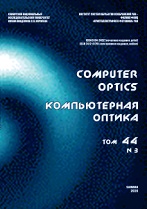|
This article is cited in 5 scientific papers (total in 5 papers)
IMAGE PROCESSING, PATTERN RECOGNITION
The methodology for obtaining nonlinear and continuous three-dimensional topographic data using inertial and optical measuring instruments of unmanned ground systems
P. Musa, I. Purwanto, D. A. Chistie, E. P. Wibowo, R. Irawan
Gunadarma University
Abstract:
Topography is the study of an area on the earth's surface. This term relates to the land's slope or contour, which is the interval of elevation differences between two adjacent and parallel contour lines. Topography generally presents a three-dimensional model of object surface relief and an identification of land or hilly areas based on horizontal coordinates such as latitude and longitude, and vertical position, namely elevation. The topography is essential information that must be provided in the execution of building or road construction based on the ground contour. The problem which is the ground contour which can provide visualization topography as a three-dimensional (3D) condition of the ground contour is not normal (non-linear). Another problem is that the tradi-tional measurement techniques with wheel rotation only measure distances and cannot represent the trajectory of the ground contour in 3D. The proposed in-depth evaluation of orientation estimation results in the topography accuracy level. This methodology consists of several processes; Inertia and orientation of an object, Distance measurement, Terrestrial topocentric - Euclidean transformation, and Topography visualization. This research designed a prototype and proposed a new visualization method of the ground contours to reconstruct a topography map between three algorithms; Direct Cosine Matrix-3D Coordinate, Madgwick-3D Coordinate, and Complementary Filter. The methodology was tested and evaluated intensively by direct observation at three meas-urement locations with different difficulty levels. As a result, the Direct Cosine Matrix-3D Coordinate is able to visualize the ground contours by reconstructing a topography map much better than other methods.
Keywords:
topography maps, visualization of a three-dimensional (3D), ground contour, inertia, distance measurement, direct cosine matrix, madgwick algorithms
Received: 24.04.2021
Accepted: 14.10.2021
Citation:
P. Musa, I. Purwanto, D. A. Chistie, E. P. Wibowo, R. Irawan, “The methodology for obtaining nonlinear and continuous three-dimensional topographic data using inertial and optical measuring instruments of unmanned ground systems”, Computer Optics, 46:2 (2022), 280–297
Linking options:
https://www.mathnet.ru/eng/co1017 https://www.mathnet.ru/eng/co/v46/i2/p280
|

| Statistics & downloads: |
| Abstract page: | 27 | | Full-text PDF : | 19 |
|




 Contact us:
Contact us: Terms of Use
Terms of Use
 Registration to the website
Registration to the website Logotypes
Logotypes








 Citation in format
Citation in format 
